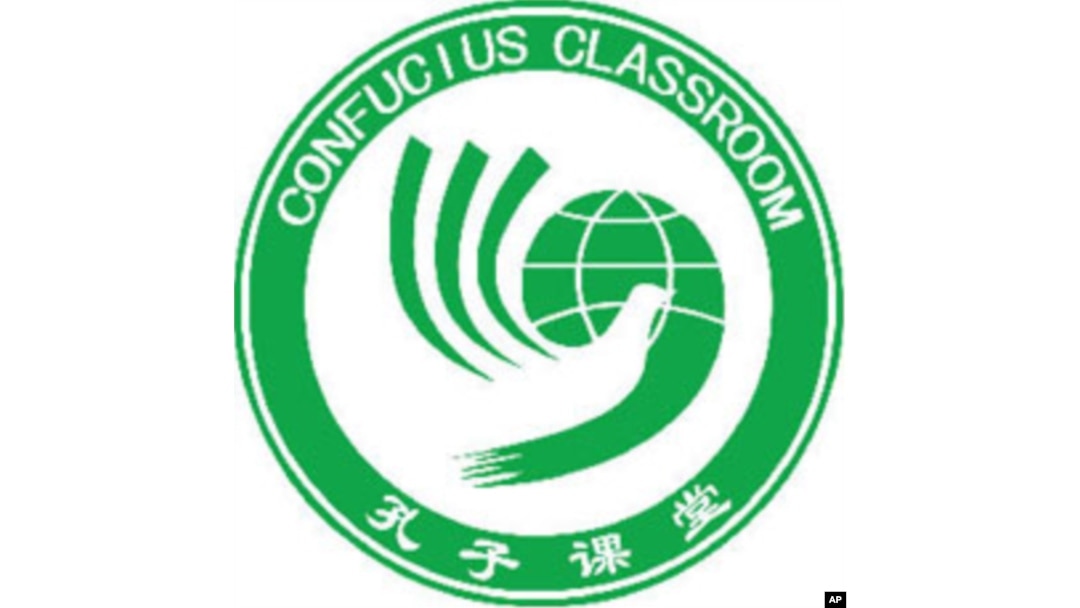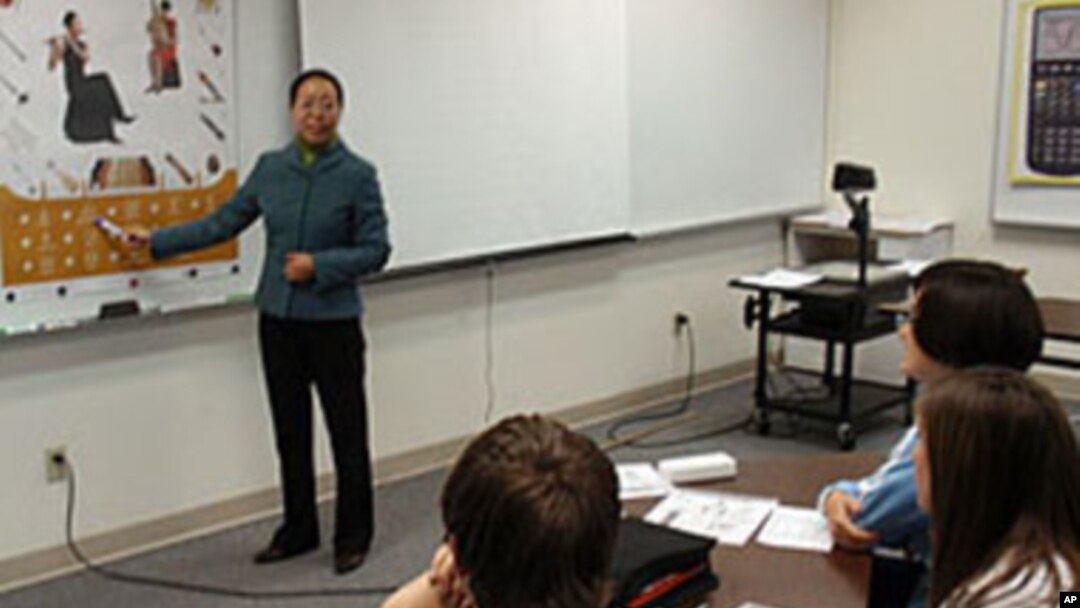A visit to a Chicago high school was on the agenda as Chinese President Hu Jintao wrapped up his visit to the United States. Walter Payton College Preparatory High School is one of dozens in the U.S. that offers Chinese language and cultural instruction through a program called "Confucius Classrooms," which is partially funded by the Beijing government.
The first U.S. school to take part in the program was St. Mary's School in Medford, Oregon, where an 11th-grade class is running through a list of words for traditional Chinese instruments. The 16 and 17-year-olds are in their fourth year of learning Mandarin Chinese.
Popular choice
Carly Irvine is not sure when she'll use her Chinese language skills outside the classroom. But she figures that day will come. "Since China and America are working so closely and our relationship is growing more and more," she says. "I think it will be very important in the future to know Chinese."
Confucius classroom is expanding rapidly around the world. St. Mary's added Mandarin to its foreign language curriculum in 2005, and three years ago, became the first school in the country to sign up for the Confucius Classroom program.
Here's how it works: The Chinese ministry of education sends a teacher to a school in the United States, pays about half of that teacher's salary and living expenses, and supplies educational materials such as books and computer programs.

Confucius classroom, a program from the Chinese government aimed at teaching high school students Chinese culture and language, is expanding rapidly around the world.
St. Mary's principal, Frank Phillips, says some parents of students at the private college-prep school were skeptical at first.
"It was so off-beat and weird then," says Phillips. "We got a lot of feedback from parents, 'Why would you teach Chinese off all things? Why not Spanish?'" St. Mary's does offer Spanish, along with German and Latin. But Phillips says knowing Chinese will give his students an advantage in a world where China is fast becoming a global economic superpower.
Lingering questions
The idea of accepting money from the government in Beijing raised eyebrows in his southern Oregon community.
"The question I always get is, 'Is this a gigantic propaganda move, is this an evil Communist plot on the part of China?'' says Phillips. "That's the number one kind of lingering Cold War suspicion about this program. From what I can detect, having been involved in it for two years, I see none of that."
In fact, the Chinese language education program has the support of the community's representative in the state legislature as well as the attention of neighboring public school districts. Nearby Ashland High School looked to St. Mary's for assistance in bringing a teacher from China to teach Mandarin. A hundred students signed up for the course.
Ashland superintendent Juli Di Chiro says the skills they're learning will be valuable if, as many advocates of teaching Mandarin say, China plays an even bigger role on the global stage in the future.
"Obviously kids mastering a second language, whatever that language is, is important," says Di Chiro. "But just given the changes in what's going on globally with China, I think it's important that our students have an opportunity to study the language and culture of China as well."
Chinese expansion
Chiro says the school hopes to bring in a second teacher next year so that even more students can take the classes. Ashland officials are even inviting about two dozen Chinese teenagers to come study at the school. The goal is to give Ashland students the chance to experience diversity.
"For our students to be able to be comfortable in multi-ethnic, multi-cultural situations which will be their worlds as they're entering the work force, we have to figure out ways of kind of making that happen," says Di Chiro.
The Confucius Classroom program is expanding elsewhere, too. The program is now offered in more than 50 other schools and universities across the United States and around the world, in more than three dozen countries including Argentina, Pakistan, Kenya and Russia.


